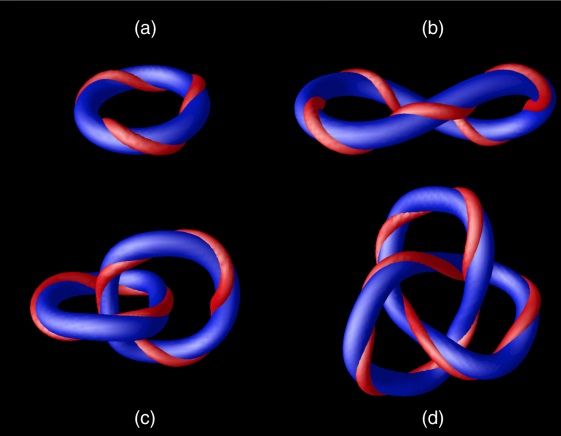(Phys.org)—In the late 1800s when scientists were still trying to figure out what exactly atoms are, one of the leading theories, proposed by Lord Kelvin, was that atoms are knots of swirling vortices in the aether. Although this idea turned out to be completely wrong, it ushered in modern knot theory, which today is used in various areas of science such as fluid dynamics, the structure of DNA, and the concept of chirality.
Now in a new paper published in Physical Review Letters, mathematical physicist Paul Sutcliffe at Durham University in the UK has theoretically shown that nanoparticles called magnetic skyrmions can be tied into various types of knots with different magnetic properties. He explains that, in a sense, these nanoknots represent a “nanoscale resurrection of Kelvin’s dream of knotted fields.”
Skyrmions are the name of a general class of particles that are made by twisting a field. When this field is a magnetic field, the skyrmions are called magnetic skyrmions. Magnetic skyrmions have attracted a lot of attention recently due to their potential applications in spintronics, where electron spins (which are related to the electron’s magnetic properties) are exploited in the design of transistors, storage media, and related devices.
